
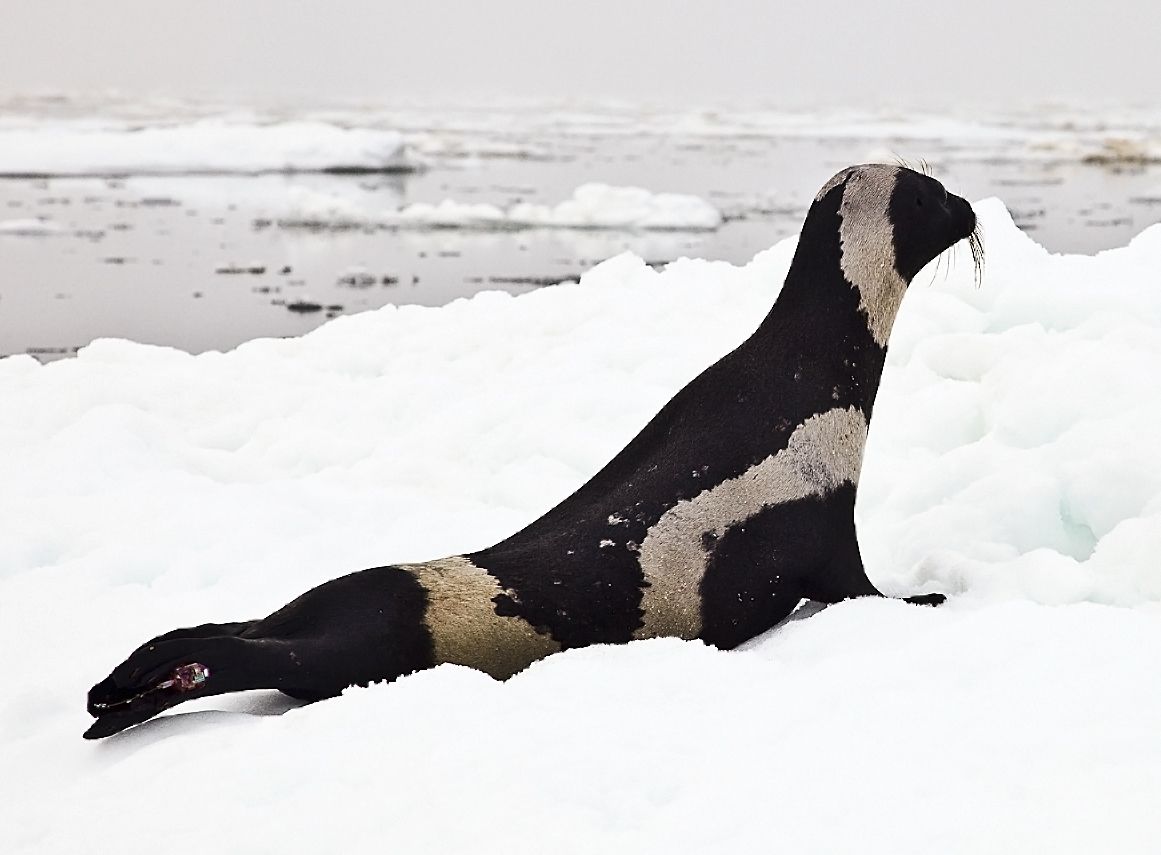
Ribbon seal
The ribbon seal (Histriophoca fasciata) is a medium-sized pinniped from the true seal family (Phocidae). A seasonally ice-bound species, it is found in the Arctic and Subarctic regions of the North Pacific Ocean, notably in the Bering Sea and Sea of Okhotsk. It is distinguished by its striking coloration, with two wide white strips and two white circles against dark brown or black fur.
It is the only living species in the genus Histriophoca,[1] although a possible fossil species, H. alekseevi, has been described from the Miocene of Moldova

Adult seals are recognizable by their black skin, which carries four white markings: a strip around the neck, one around the tail and a circular marking on each body side,[4] which encloses the front fins. The contrast is particularly strong with the males, while with females the difference in color between bright and dark portions is often less conspicuous. Newborn ribbon seal pups have white natal fur. After moulting their natal fur, their color changes to blue-grey on their backs and silvery beneath. Over the course of three years, portions of the fur become darker and others brighter after every molt, and only at the age of four years does the striped pattern emerge.[5]

The ribbon seal has a short snout with broad, deep internal nares and large, rounded, front-facing orbits.[6] Like other phocids, it possesses enlarged auditory bullae and lacks a sagittal crest.[6] The ribbon seal has curved, widely spaced dentition and smaller canines than other phocid species.[6]
The ribbon seal has a large inflatable air sac that is connected to the trachea and extends on the right side over the ribs. It is larger in males than in females, and it is thought that it is used to produce underwater vocalizations, perhaps for attracting a mate.[citation needed] Unlike other pinnipeds, the ribbon seal lacks the lobes that divide the lungs into smaller compartments.[7] The ribbon seal can grow to a length of about 1.6 m (5.2 ft) and a weight of 95 kg (209 lb), with males being larger than females.
The main predators of ribbon seals include great white sharks and orcas.[8]
Sexual dimorphism[edit]
Male ribbon seals are typically larger than females. This is particularly recognizable in their skull morphology because male nares openings are much larger than female nares openings.[6] Larger males are hypothesized to have a better chance of reproducing with multiple females. They have a higher fitness level and win in competition with other males over females.[9]
Habitat[edit]
The ribbon seal lives in the Arctic parts of the Pacific Ocean. During winter and spring, it hauls out on pack ice to breed, molt, and give birth. During this time, it is found at the ice front in the Bering and Okhotsk Seas.[10] During the winter and spring, the ribbon seal lives in open water, though some move south as the ice recedes with warmer temperatures. Little is known about its habit during this time, as it is so far from land and human observation. The ribbon seal almost always comes to land.
Thus far, there have been three acknowledged instances where ribbon seals have been found as far south as Squamish, British Columbia, Long Beach, Washington, and even further south at Morro Bay, California. There was nothing to suggest that illness was the cause of the seals appearance, as they appeared to be healthy.[11][12]
Behavior[edit]
Ribbon seals are rarely seen out on the ice and snow. Their method of movement on the ice is highly specialized. While quickly undulating their body in serpentine motion, they grip into the ice with their claws and use alternating flipper strokes to pull themselves across the ice's surface. It has been observed that this form of locomotion is rendered ineffective on other surfaces, most likely due to the increased friction between the animal's fur and the substrate.[5]
While out on the ice, ribbon seals are noticeably indifferent to their surroundings. Humans in boats have been able to closely approach these seals before disturbing them. Mothers have been observed leaving pups by themselves for extended lengths of time. This would suggest that they experience little predation from land predators such as bears or humans, relative to other seals. When these seals are captured in nets, they are known to engage in feigning death behavior.[5]
Recommended Videos
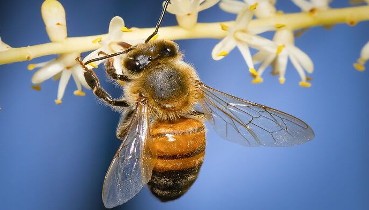 “An Amazing World Right Under Your Nose”: 24 Pictures Of Nature That I Took With A Macro Lens323 views
“An Amazing World Right Under Your Nose”: 24 Pictures Of Nature That I Took With A Macro Lens323 views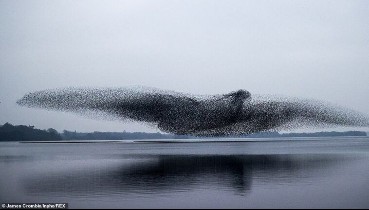 Incredible Moment Flock Of Starlings Form Giant Bird Over a Lake12792 views
Incredible Moment Flock Of Starlings Form Giant Bird Over a Lake12792 views-
Advertisements
 17 English Garden Ideas375 views
17 English Garden Ideas375 views Meet Barry, A Gloster Canary That Has A Fabulous Bowl Cut889 views
Meet Barry, A Gloster Canary That Has A Fabulous Bowl Cut889 views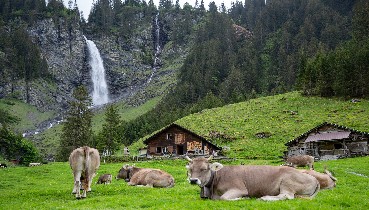 Switzerland Nature Photos.1564 views
Switzerland Nature Photos.1564 views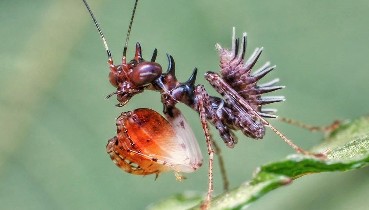 Boxer Mantis nymph (Pachymantis bicingulata)159 views
Boxer Mantis nymph (Pachymantis bicingulata)159 views Black-Flecked Plumage With Yellow Patches On Wings, New Holland Honeyeater Becomes Standout In The World Of Birds428 views
Black-Flecked Plumage With Yellow Patches On Wings, New Holland Honeyeater Becomes Standout In The World Of Birds428 views Photographer Captures Rare Portraits of the Summer Lives of Polar Bears2300 views
Photographer Captures Rare Portraits of the Summer Lives of Polar Bears2300 views
You may also like
 Camouflaged Crocodile Portrait Wins World Nature Photography Awards
Camouflaged Crocodile Portrait Wins World Nature Photography Awards  20 Then And Now Pics Of Random Places That Have Changed So Much In A Few Years
20 Then And Now Pics Of Random Places That Have Changed So Much In A Few Years 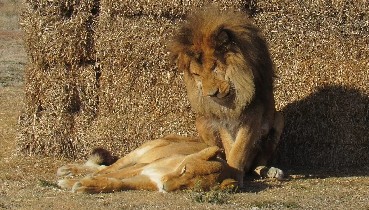 Lion Husband Stays By His Sick Wife’s Side Until The Very End
Lion Husband Stays By His Sick Wife’s Side Until The Very End 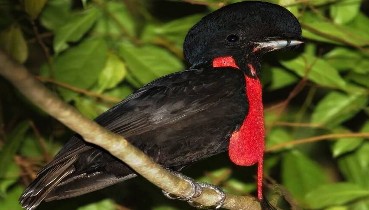 The bare-necked umbrellabird (Cephalopterus glabricollis) is a species of bird in the family Cotingidae.
The bare-necked umbrellabird (Cephalopterus glabricollis) is a species of bird in the family Cotingidae.